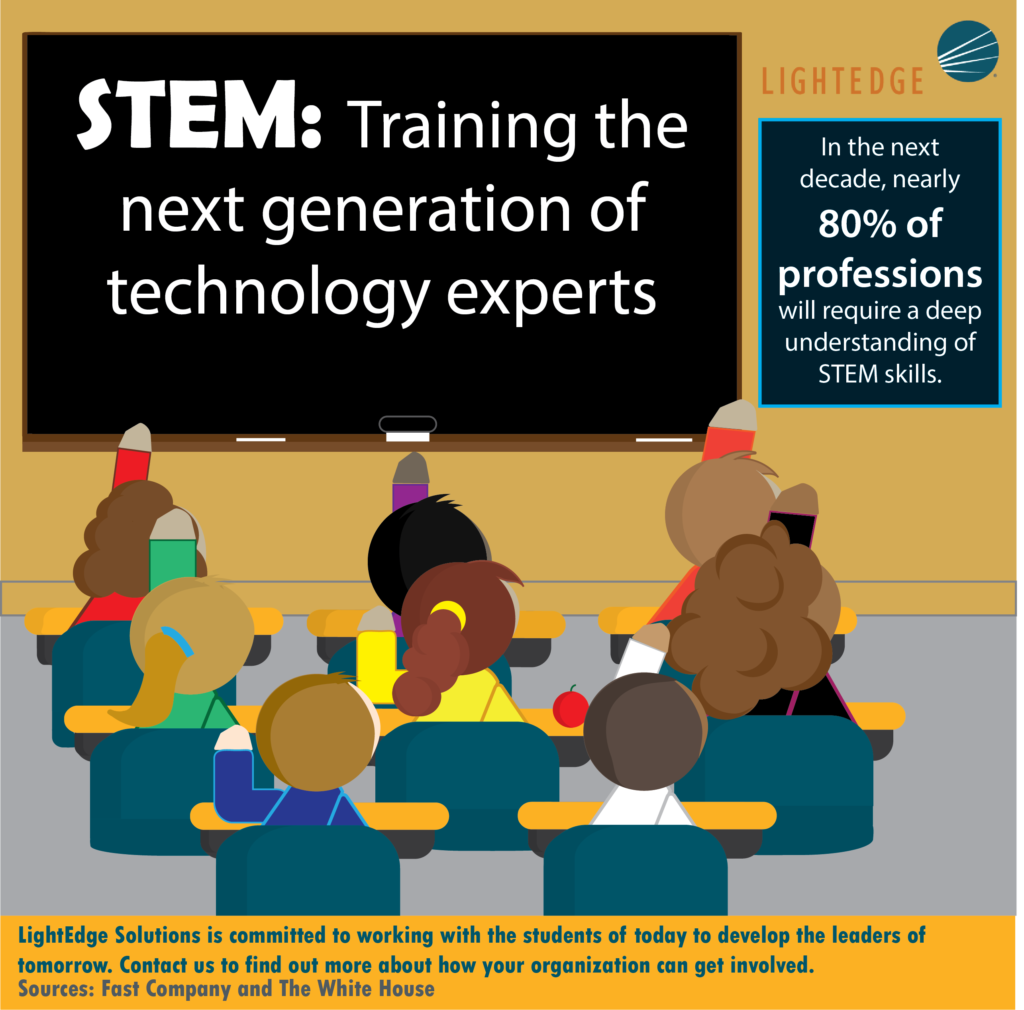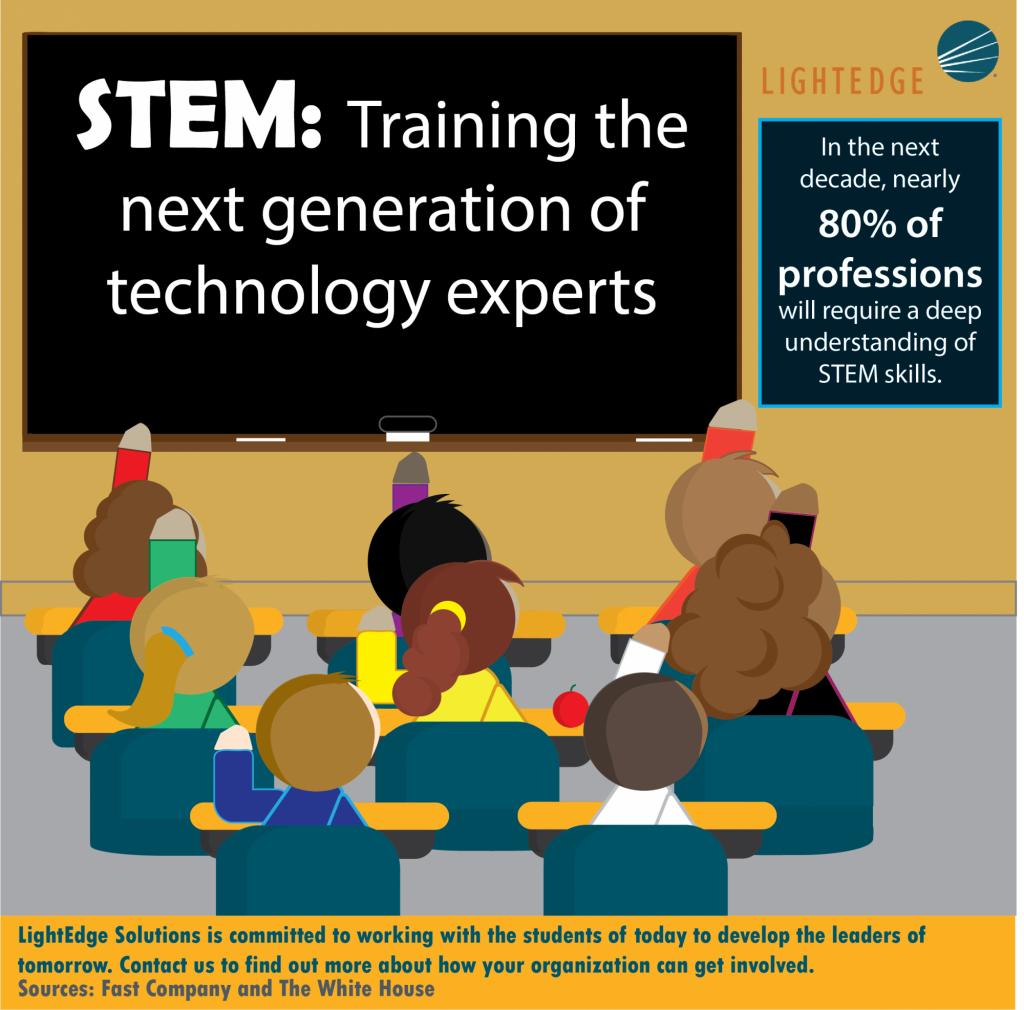The United States is facing an employment crisis, and it’s not the kind you’re used to hearing about. This crisis concerns a shortage of employees, particularly as it pertains to technology experts. According to code.org, a non-profit dedicated to expanding access to computer science, there are currently 607,708 open computing jobs nationwide, but only 42,969 computer science students graduated into the workforce last year.
A 2016 White House fact sheet explained that “Providing access to CS [computer science] is a critical step for ensuring that our nation remains competitive in the global economy and strengthens its cybersecurity. Consider these statistics:
- In 2015, there were over 600,000 tech jobs open across the United States.
- By 2018, 51 percent of all STEM jobs are projected to be in CS-related fields.
- The Federal government alone needs an additional 10,000 IT and cybersecurity. professionals, and the private sector needs many more.
The fact sheet continued, “CS is not only important for the tech sector, but also for a growing number of industries, including transportation, health care, education, and financial services, that are using software to transform their products and services. In fact, more than two-thirds of all tech jobs are outside the tech sector.”
The problem is that we don’t have even a fraction of the qualified people needed to fill these roles. And the number of kids interested in jobs in STEM fields is very low. According to a survey conducted by Junior Achievement and Ernst & Young, more than 90 percent of teenagers nationwide know which type of job they want. Many more boys (36 percent) said they wanted to go into a non-medical STEM field, while only 11 percent of girls aspired to do so.
So, what will it take to change these numbers? Kids need access to computer science and other STEM-oriented education. According to Computer Science Education Week, computer science classes don’t count toward math or science high school graduation requirements in 22 states and fewer than 3 percent of college students graduate with a degree in computer science. And, with potential cuts to national STEM education budgets on the horizon complicated by the lack of computer science teachers, things aren’t looking to improve. We need to make some changes—and make them now.
As the United States rapidly falls behind other developed countries in STEM fields and education budgets are dwindling, businesses will continue to struggle to fill roles with qualified candidates. The United States ranked 24thout of 33 counties in students’ science literacy, according to a recent Program for International Student Assessment study. Our schools are not producing the workforce we need to compete on the global stage. According to data collected by the U.S. Bureau of Labor Statistics, over 1.4 million software-development jobs will go unfilled in the United States by 2020.

While there may be a spark of hope in White House’s announcement of a series of actions designed to expand apprenticeships and job retraining for American workers, our country needs more. This is where business leaders can step in and provide opportunities and exposure. Without exposure to computer science and other STEM fields, kids simply won’t move into these fields—this is particularly true for female students. Computer science has been a male-dominated field and can seem unwelcoming to females who haven’t been given opportunities to become immersed in it. But, when companies provide these opportunities, they’ve been overwhelmingly successful.
For instance, LightEdge has worked with the Northland CAPS program in Kansas City that immerses high school students in professional environments to prepare them for college and entering the global workforce. Through our work with Northland CAPS, we were introduced to a similar program in our Des Moines market—Waukee APEX. Over the past two years, we’ve developed a strong relationship with Waukee APEX and host an Information Management Design class at our headquarters in downtown Des Moines.
In addition to hosting this class, we are continually involved with the students at Waukee APEX. Our engineers and executives help develop curriculum for their technology strand courses, have had classes tour or local data center, participated in mock interviews, and invited small groups of students to learn about networking and cloud technology. We are looking forward to developing new ways to partner with students and open doors for them.
Another way to make an impact on our future workers is through mentorships. Through mentorship programs, kids can see STEM in real-life situations. Anyone can become a mentor. There are opportunities available nationwide.
Nonprofit groups across the country help steer kids into the talent-hungry STEM workforce and can always use help—whether through monetary donations or through the sharing of knowledge of current employees. Look at Girls Who Code. This nonprofit group organizes seven-week summer immersion coding camps for rising junior and senior high school girls, who are selected through an application process. Girls Who Code has established a curriculum and trained teachers to run the program in office space provided by host companies. The organization also helps local communities set up their own Girls Who Code Clubs, which are free for the girls to participate in. Girls Who Code has been extremely successful:
- 93 percent of Summer Immersion Program participants saying they want to major in or are now interested in computer science.
- 65 percent of Club participants saying they are now considering a major or minor in computer science.
If your company is looking for a way to get involved and make a difference in the future of the STEM workforce, a simple internet search will probably return more options than you’ll know what to do with. It will certainly inspire you to make a difference.




